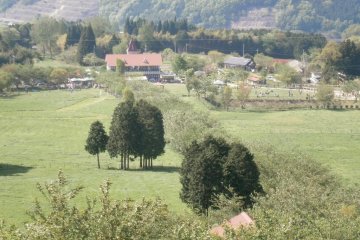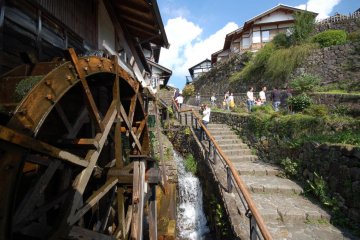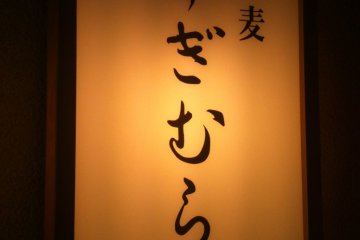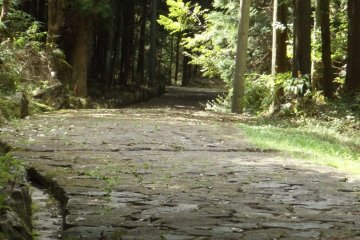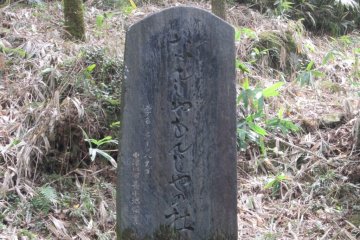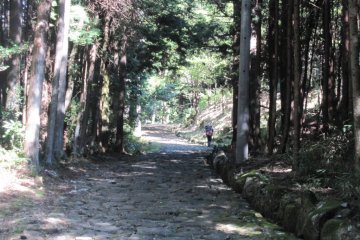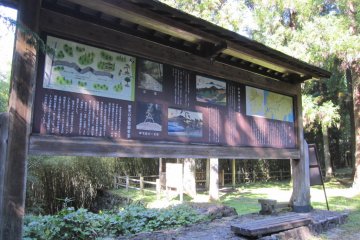A trip to get a close up view and walk a part of the Nakasendo Post Road at Ochiai Juku (the 44th station), which ran from Edo (Tokyo) to Kyoto, many centuries ago, is to touch a place that is a part of very unique Japanese history. On the day we visited this, our encounter was where the road has climbed up out of Nakatsugawa, and begins the trek on up to Magome, which of course is one of the many old towns along the old Post Road. As it turned out, this was but part of our ‘sweep’ from Nakatsugawa and ending in Magome, before we returned to our home base in Kashimo.
The day we came to visit this segment, we were fortunate to enjoy very warm, sunny and pleasant weather, even though this was the beginning of early October. The parking area was quite spacious and the rest facilities were exceptionally clean and fresh, which made it all the more pleasant to enjoy our adventure along the remnants of this ancient road.
As we descended the stairs to find the cobblestones laid so many years, several interesting thoughts arose: How many years and men did it take to put what were clearly quite heavy stones in place, stones which ranged in size and weight, from medium to quite large and likely nearly 200-300 kilograms apiece. While the surface was irregular, it was not unduly hard to navigate and in fact, the urge to ‘walk as far as time would allow’ was quite strong, so off we went.
Surrounded by dense pine, bamboo, and chestnut tree forest, the ‘roof’ above us provided a soft but pleasant canopy while allowing for a sense of intimacy along the pathway of the road that was restful and comfortable.
A superb map of the entire Nakasendo Post Road, noting where we were on that road, and all the unique features of the many cities which populated the area then, and likely still, today, was accompanied by excellent pictographs depicting what one might imagine was the traffic on the road at the time it was in full use.
One could stand in front of that board and only needed to let their eye wander to the right or left to look up and down the road and almost imagine fellow travelers, businessmen, merchants, families moving along at what had to be a very significant effort, for the inclines and declines of this road are not for the faint of heart or those who were given to little exertion.
Because the road dropped away down through the valley towards Nakatsugawa, it was impossible not to want to ‘just see a little further’ what the next bend in the road might bring. Alas, because we had limited time to walk this ancient path, we had to stand at the curve in the road, about three hundred meters from where we started and look down as the road made a sinuous twisting and turning descent and off into the distance, make its way towards downtown, modern day Nakatsugawa. Seeing the road wind out of sight gave rise to a sense of promises of a really fine walking adventure, where one is able to continue on to the town. Or say, pack a picnic and begin from downtown Nakatsugawa and take this road up to the hill where we came upon it.
With the quiet and the serenity surrounding this ancient road, one could enjoy a very real connection to the past as the scene was conducive to contemplation of the meaning of this road and what it did for the evolution of Japanese culture, internal trade, and access to many smaller towns between the two much larger communities of Edo (Tokyo) and Kyoto.
If time and opportunity allow, we would be back to walk far more of this road than we were able to, for it has a special magnetism of its very own.



